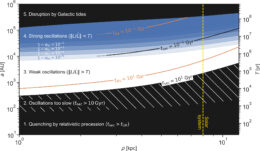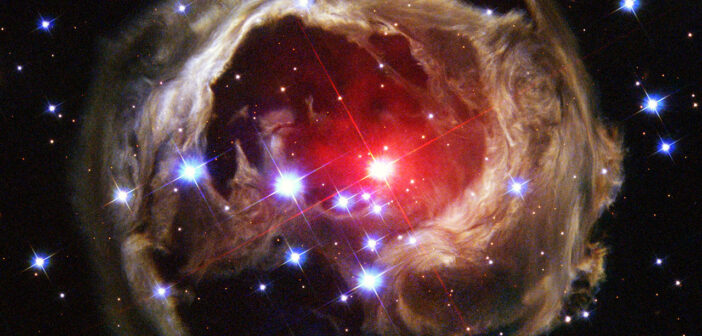Stars orbiting one another on extremely wide orbits seem destined to remain apart forever — but new research shows that the subtle influence of the Milky Way’s gravitational pull can bring them crashing together.
Loosely Connected Stars
Many stars in our galaxy travel through space with a binary partner, but some binary pairs are closer than others. Surveys suggest that as many as 12% of nearby Sun-like stars are members of wide binary systems with separations of 100 to 100,000 au or more. Unlike close stellar binaries that might influence each other’s evolution through accretion, stellar winds, and radiation, wide binaries are expected to evolve as if their stellar partner didn’t exist.
Though unaffected by their partners, stars in loosely connected binary systems can be swayed by the subtle influence of the Milky Way’s background gravitational pull, or they can be knocked off course by passing stars. How do these factors affect the evolution of wide binary systems?
Unexpectedly Close
A team led by Jakob Stegmann (Max Planck Institute for Astrophysics) used relativistic N-body simulations to study how the background gravitational pull of the Milky Way and nudges from passing stars affect the orbits and evolution of stars in wide binary systems.

Typical outcomes for wide binaries as a function of initial binary separation and distance from the galactic center. Click to enlarge. [Stegmann et al. 2024]
Swept Up in the Galactic Tide
Many of the binaries underwent wild eccentricity oscillations that brought their orbits from nearly circular to narrow and elongated. This means that initially widely separated stars can undergo close encounters, mass-transfer events, and even mergers.

An example of the evolution of a binary’s separation. This particular binary collided after 2.3 billion years, producing gravitational waves. Click to enlarge. [Adapted from Stegmann et al. 2024]
There are more intricacies to the model results than can be covered in this brief highlight, so be sure to check out the full research article for all the details!
Citation
“Close Encounters of Wide Binaries Induced by the Galactic Tide: Implications for Stellar Mergers and Gravitational-Wave Sources,” Jakob Stegmann et al 2024 ApJL 972 L19. doi:10.3847/2041-8213/ad70bb
